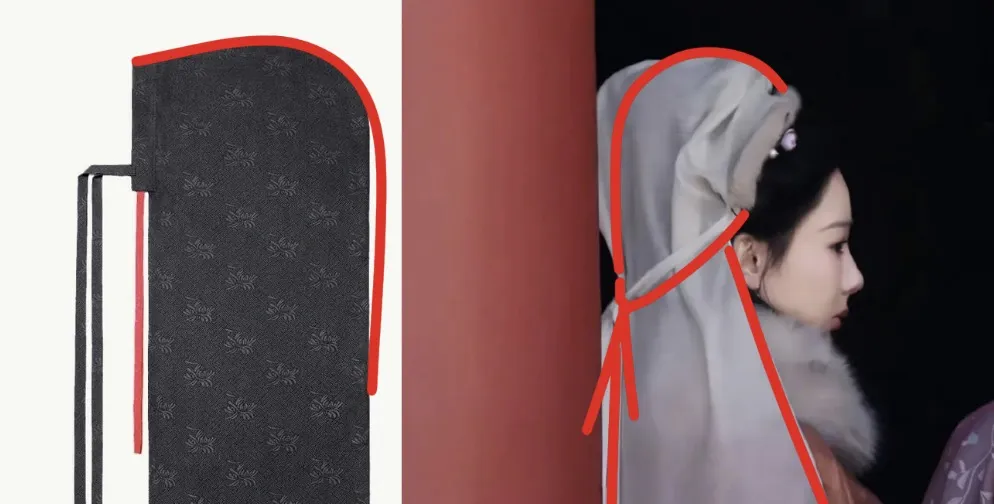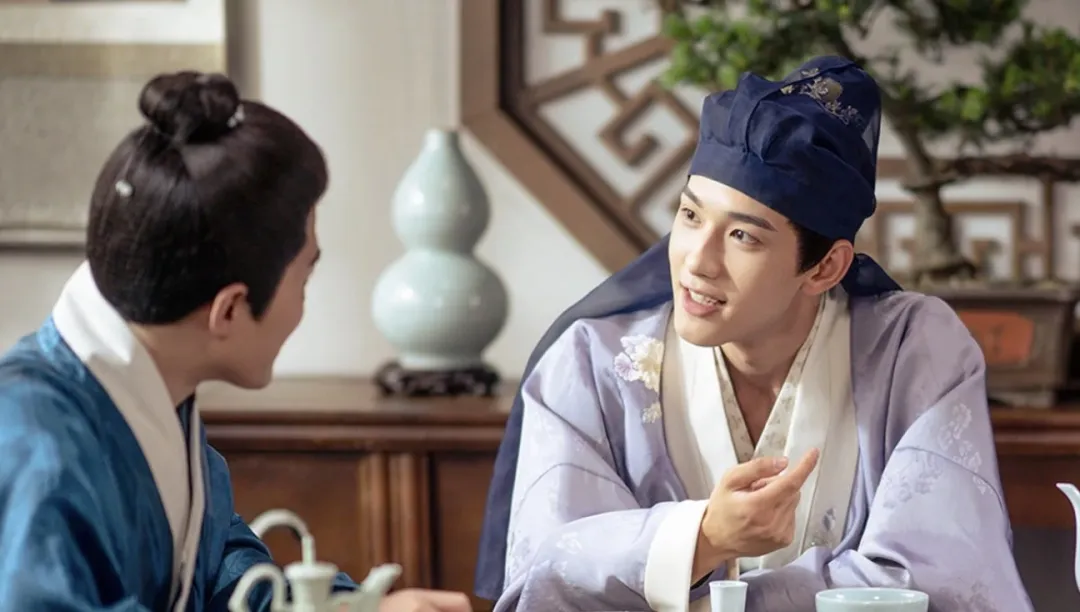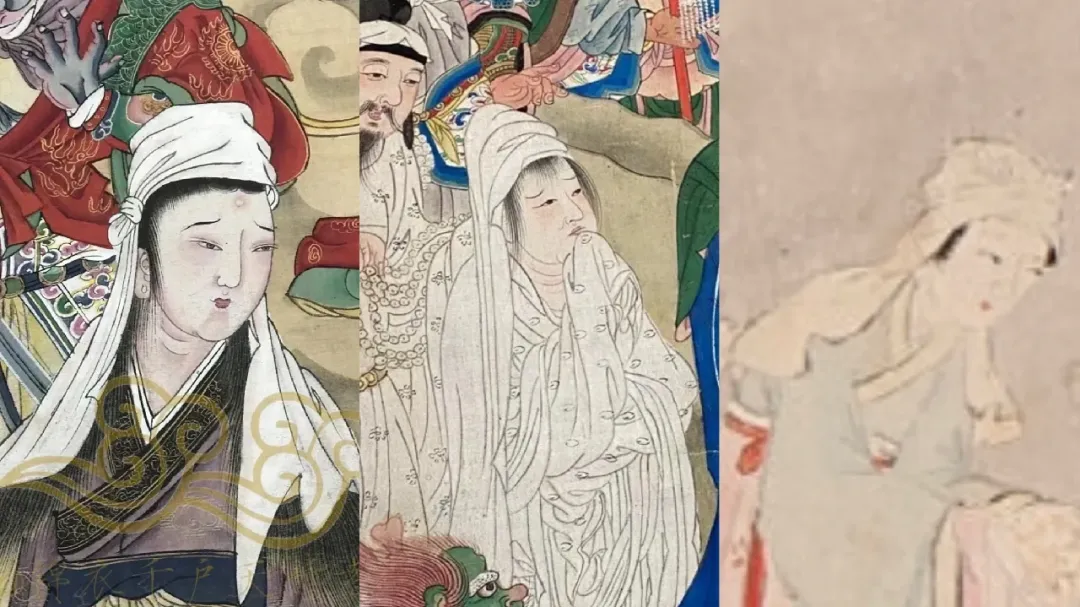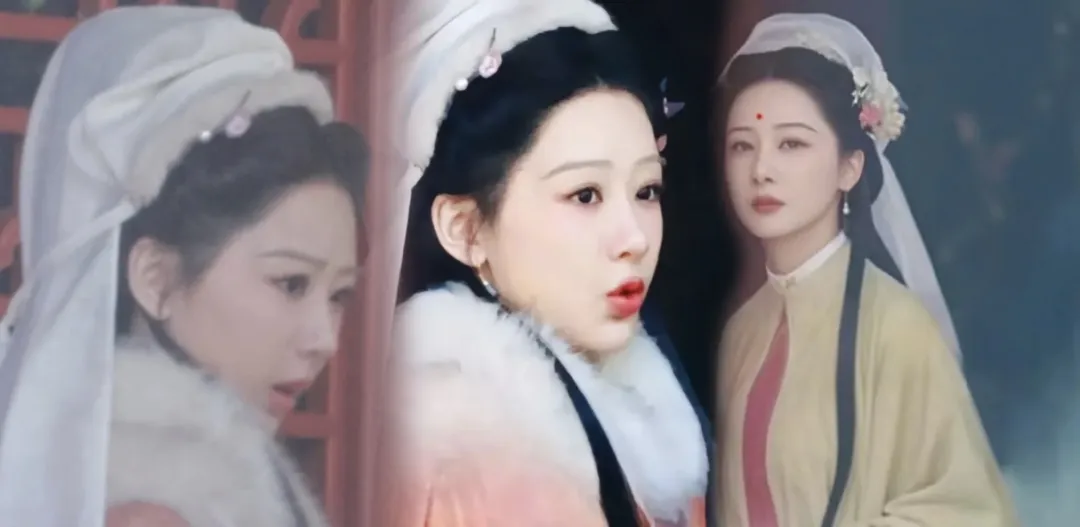
Yang Zi's new makeup look in the ancient costume drama "Jia Ye" (The Family Business) is truly eye - catching. With a white veil on her head, netizens exclaimed, "Do I seem to see the Goddess of Mercy?"
First, Yang Zi's veil style is somewhat similar to the "gaitou" (盖头) in Song Dynasty paintings and also resembles the fujin popular among women in the late Ming Dynasty, but it doesn't cover the forehead. The gaitou refers to a "square purple silk cloth" that can cover half of the body. It's just a square piece of cloth. One can go out directly by draping it over the head. As Mr. Shen Congwen verified, "the 'gaitou' was indeed a popular head - wear among women in the Song Dynasty." The relationship between the Ming Dynasty fujin and the Song Dynasty gaitou remains inconclusive.
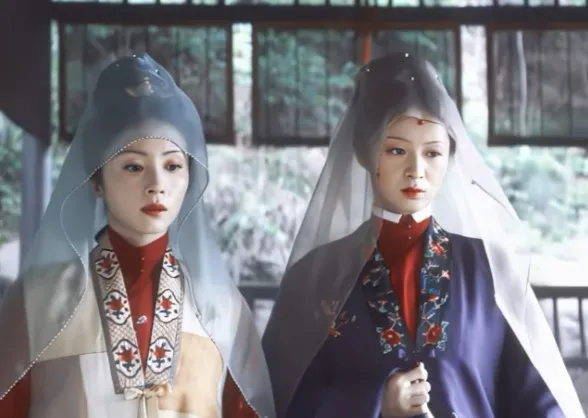
In the drama "Jin Nang Miao Lu" (The Wonderful Record in the Pouch) with a Ming - style setting, the "gaitou" also appeared. It can be seen that the gaitou is more like a square scarf for draping. Working women may tie it up locally for convenience.
The fujin popular in the Ming Dynasty is actually a headscarf with a hood curve and straps. Initially, it was mostly worn by men and later by women dressing in men's clothes during the late Ming Dynasty. Its inheritance relationship with the gaitou or the Hu - style wind hat needs further study. Maybe it has more to do with the futou (幞头) because it was mainly worn by men.
It's a pity that the fujin rarely appears in domestic ancient costume dramas set in the Ming Dynasty, while it often shows up in Korean dramas. This has led to a preconceived notion that it's a Korean product. In fact, the fujin originated from China, and its style has remained relatively unchanged.
The earliest mention of the "fujin" in China is in "The Biography of Zheng Xuan" in "The History of the Later Han Dynasty". Zheng Xuan chose to meet guests with a fujin on his head instead of court clothes. The style of the fujin we recognize today became popular from the Song to the Ming Dynasty. As verified by Ming Dynasty cultural relics, it's usually made of a three - chi square silk fabric. When wearing, one wraps the hair from the forehead around the back of the head and ties it tightly.
In the Song and Ming Dynasties, the fujin was closely related to Confucian culture and was a must - have for solemn occasions. At first, it was a symbol of the literati and gentry class. By the late Ming Dynasty, it became a new trend in women's clothing.
The Korean fujin was influenced by the Ming Dynasty fujin in China. Our impression of the "Goddess of Mercy" often comes from Song and Ming - style works, where the white - robed Goddess and female believers usually wear a gaitou or fujin, reflecting the dressing style of women in those dynasties.
It's a shame that our domestic clothing culture, like the fujin, is often overlooked. Over the years, it has only appeared in a few ancient costume dramas with few scenes. We really need to do more to promote our film and television clothing culture.
